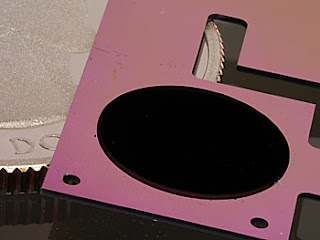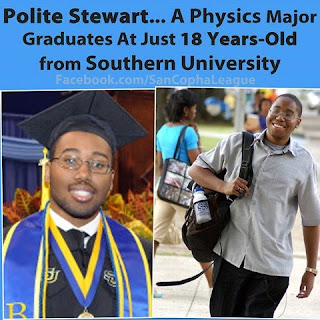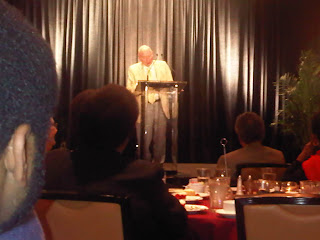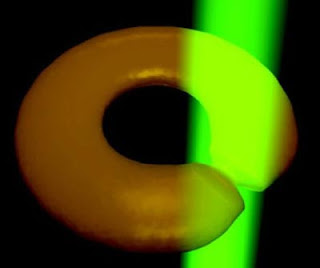Polite Stewart, Jr. received his degree in physics Friday at the ripe old age of 18.
Stewart entered Southern four years ago to enormous fanfare. He was under a microscope as his classmates learned of the student on campus who was too young to get a driver’s license and actually too young to live on campus alone.
He had offers from colleges across the country. Who didn’t want a child prodigy on their campus? But, it would have been difficult for his parents to send him across the country at such a young age.
Instead, he enrolled at Southern where he was familiar with the campus, where he had taken high school-level courses at the school’s famous Timbuktu Academy, and more importantly, he would only be a 10-minute drive from campus.
But with all of the local media tracing his first steps on campus, Stewart was an unwilling celebrity. He just wanted to get down to doing his schoolwork and getting to fit in with his classmates. “The attention I got died down pretty quickly,” he said.
He traces his love for academics to the dinosaur books his father bought him as a young child. Later, as a toddler, Stewart said he began watching scientific documentaries where his interest in herpetology, entomology and paleontology grew. “I was pretty much interested in all the sciences,” he said.
Now, barely an adult, Stewart has set his sights on a career in biological and physical engineering. He spent last summer doing research at North Carolina State University, where he worked on developing self-cleaning, anti-glare glass coated with anti-reflective material and designed to repel oils and water.
After continuing his research in a post-grad program next summer, Stewart said he will start graduate school at one of a number of colleges that have shown interest.
His mother, Ava Stewart, isn’t surprised by her son’s success.
“His father and I could tell early on that he wanted information. There was an intensity in his focus. He started reading when he was three,” she said.













